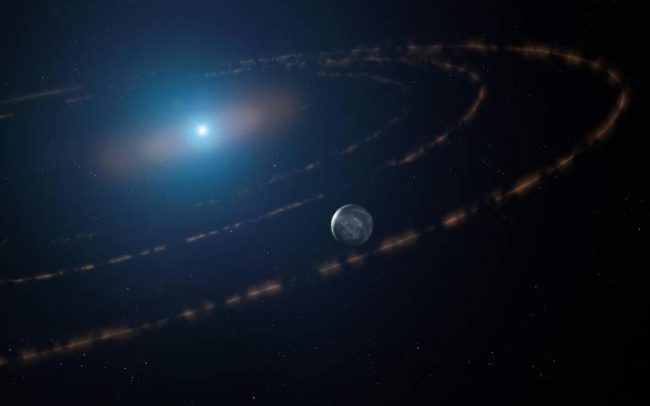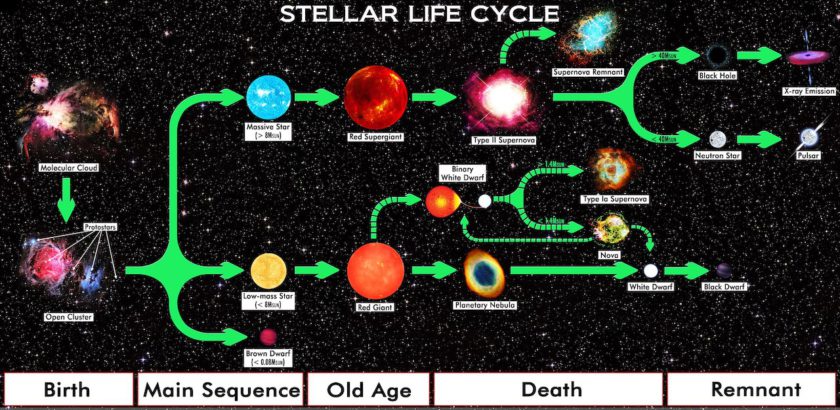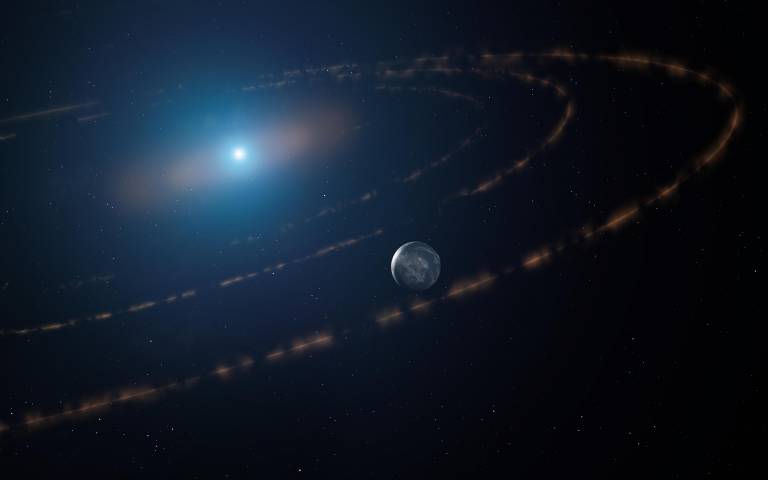
Credit: Mark A. Garlick
The BBC, a highly reputable news source, ran the following story on Feb 11, 2022 – “Life could exist on planet orbiting ‘white dwarf’ star”.
Their source is the author of a new scientific paper. He has offered the speculation that it just might be possible that this new planet may indeed harbor life.
I disagree.
Let’s step back and clarify it all a bit
What has been detected is the possibility of a planet around a white dwarf star within what is known as the habitable zone.
Commonly called the goldilocks zone by some, this describes a planet that orbits at just the right distance away from it’s parent star. It is not too hot and not too cold, but instead is just right for liquid water, hence life. That’s it, that is all they have. Anything and everything beyond that, including the possibility of life is pure speculation.
The vagueness of the planet being there is reported by the BBC as follows:
The research team do not have direct evidence of the planet’s existence – but the movements of 65 Moon-sized structures orbiting the white dwarf’s habitable zone, suggest it is there. The structures’ distance in relation to each other does not change, suggesting that they are under the influence of the gravity of a planet in the vicinity.
“It was a shock to the team,” said Prof Farihi. “The motion was so eerily precise you couldn’t make this stuff up.”
The BBC also led with the “Life” speculation as follows:
“This is the first time that anything has been seen in the habitable zone of a white dwarf. And thus there is a possibility of life on another world orbiting it,” he told BBC News.
In the habitable zone?
Amazing if confirmed.
Life?
Nope, sorry, there are some serious problems with that leap. I’ll briefly get into why, but we need to take this slowly and carefully, step by step. No maths, and no technobabble, I promise.
The Scientific Paper
This is the foundation, so let’s start here. Titled “Relentless and complex transits from a planetesimal debris disc” this open-access paper was published within the monthly notices of the Royal Astronomical Society.
It does indeed contain compelling data that very strongly suggests a planet is there in the habitable zone. What is also quite exciting is that it is not too far away, only 117 light years away from Earth. Well yes, “only” is doing a bit of heavy lifting there.
Because it is a white dwarf and a lot cooler than a normal star, this planet is orbiting a lot closer to the star to be in the habitable zone.
So could there be life there?
There is one rather big problem – the star is a white dwarf, and that is a deal-breaker.
What exactly is a White Dwarf?
Stars have a lifecycle. It’s complicated, but understanding this perhaps helps to appreciate the problem. Here is a chart that illustrates the stellar lifecycle…

Briefly, stars start out via collapsing clouds of gas and dust.
- The main nuclear fusion sequence is when the star is consuming Hydrogeon. This is where Hydrogeon atoms are being fused and combined into heavier elements. As this happens energy is released, hence the heat and light of the star. The Hydrogeon will first fuse to deuterium and then to helium.
- Eventually the Hydrogeon runs out. This, depending upon the mass of the star, will trigger the fusion of helium. The star also expands in size and becomes a red giant.
- Once all the fuel runs out after billions of years a small or mid mass star will expell its shell and leave behind its core. That remanent core is a white dwarf.
- No nuclear fusion is taking place, so white dwarf will simply cool over a long period of time and become a black dwarf.
The expelled shell becomes a planetary nebula.
In other words, for low and mid-sized mass stars, a white dwarf is what you have left after the star has run out of fuel. About 97% of the stars within our galaxy will end up like this. The rest, the larger mass stars, are big enough to become neutron stars or even a black hole.
As I mentioned above, for the white dwarf, fusion is not happening, so it is now cooling.
There is the problem.
Life needs billions of years to take hold. For a white dwarf, that amount of time is simply not there. Right now the planet potentially detected is within the habitable zone. Because the white dwarf is cooling, that habitable zone is shifting over a period of time that renders the possibility of life deeply unstainable and highly improbable.
Remember also, to become a white dwarf the star had initially expanded into a red giant. That phase would, in our solar system have resulted in something as big as the orbit of Mars or beyond. Earth will be gone when our sun enters that phase in about 5 billion years.
But what about some habitable moon around a Jupiter like body further out, is that viable?
Nope. When the red giant expels its outer shell, any such body would rather obviously be impacted by that.
A white dwarf might indeed start out at 100,000 K, but after only 2 billion years (yikes, did I really qualify 2 billion with the word “only”), it will have rapidly cooled down to 8,000 K. That habitable zone it started with has moved inwards quite a lot.
Where should we look for life?
We do need to look for planets in the habitable zone.
There are however several habitable zones to consider.
- The zone around the star where conditions are right for liquid water to be there.
- The location of the star within the galaxy. Too close to the center and you get blasted by radiation due to the denisity of stars there, or simply get bombarded by comets kicked into you via the gravationaly kicks from nearby stars. You also don’t want to be too far out because you need the heavy elements. The further out you go the less of that you get. Our location in the galaxy is ideal. Roughly about 0.3% of stars in the galaxy could today support complex life. That might sound small, but this is still a big number.
- Then there is also a temporal habitable zone – you need enough time of stabality – and so you need to be looking at yellow stars like ours, not white dwarfs.
Is there life out there?
Life is highly improbable, but we live in a universe that is vast. Our galaxy has 100-400 billion stars. Beyond that there are in the observable universe billions and perhaps trillions of galaxies. That is so vast we struggle to wrap our heads around that number.
Such vastness means that highly improbable things are statistically rather common.
Further Reading
- The BBC Article (Feb 11, 2022) – Life could exist on planet orbiting ‘white dwarf’ star
- The recently published open access paper within the monthly notices of the Royal Astronomical Society (Feb 8, 2022) – Relentless and complex transits from a planetesimal debris disc
- The UCL Press Release associated with the paper (Feb 11, 2022) – Planetary bodies observed for first time in habitable zone of dead star
- Wikipedia – White Dwarf
- Wikipedia – Stellar Evolution
- Wikipedia – Circumstellar habitable zone
- Wikipedia – Galactic habitable zone
